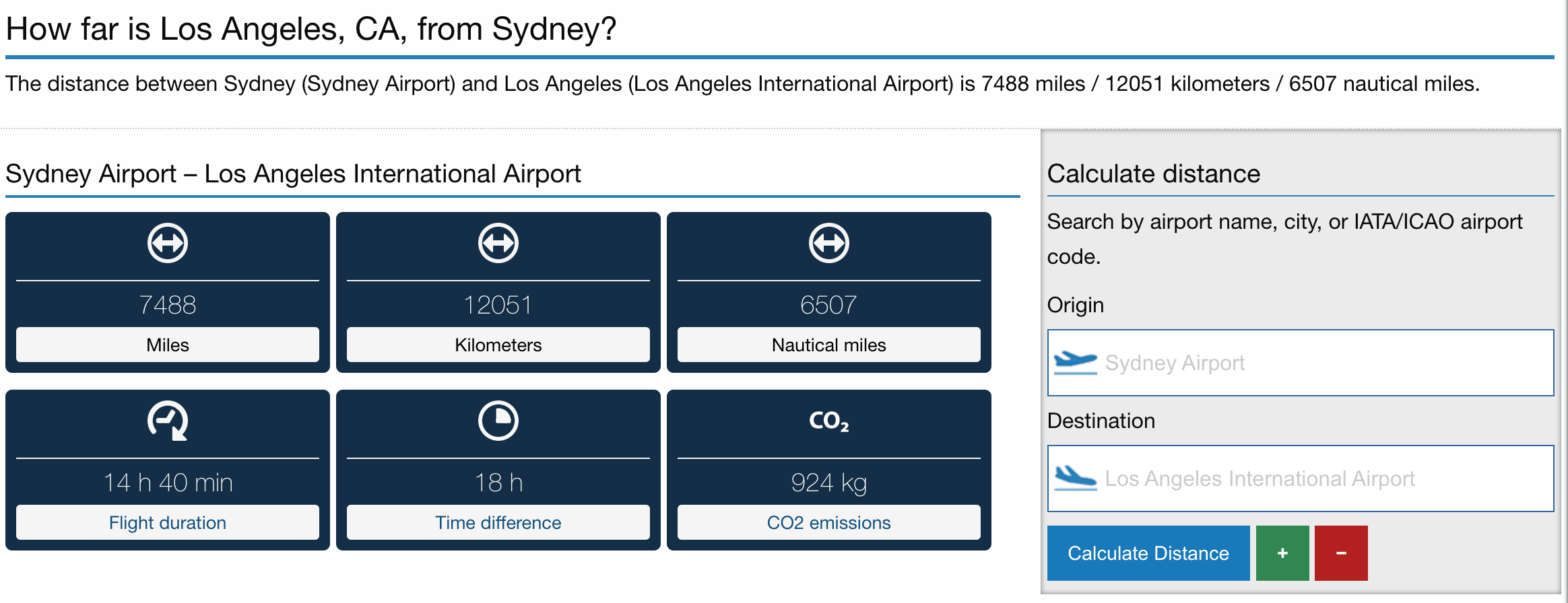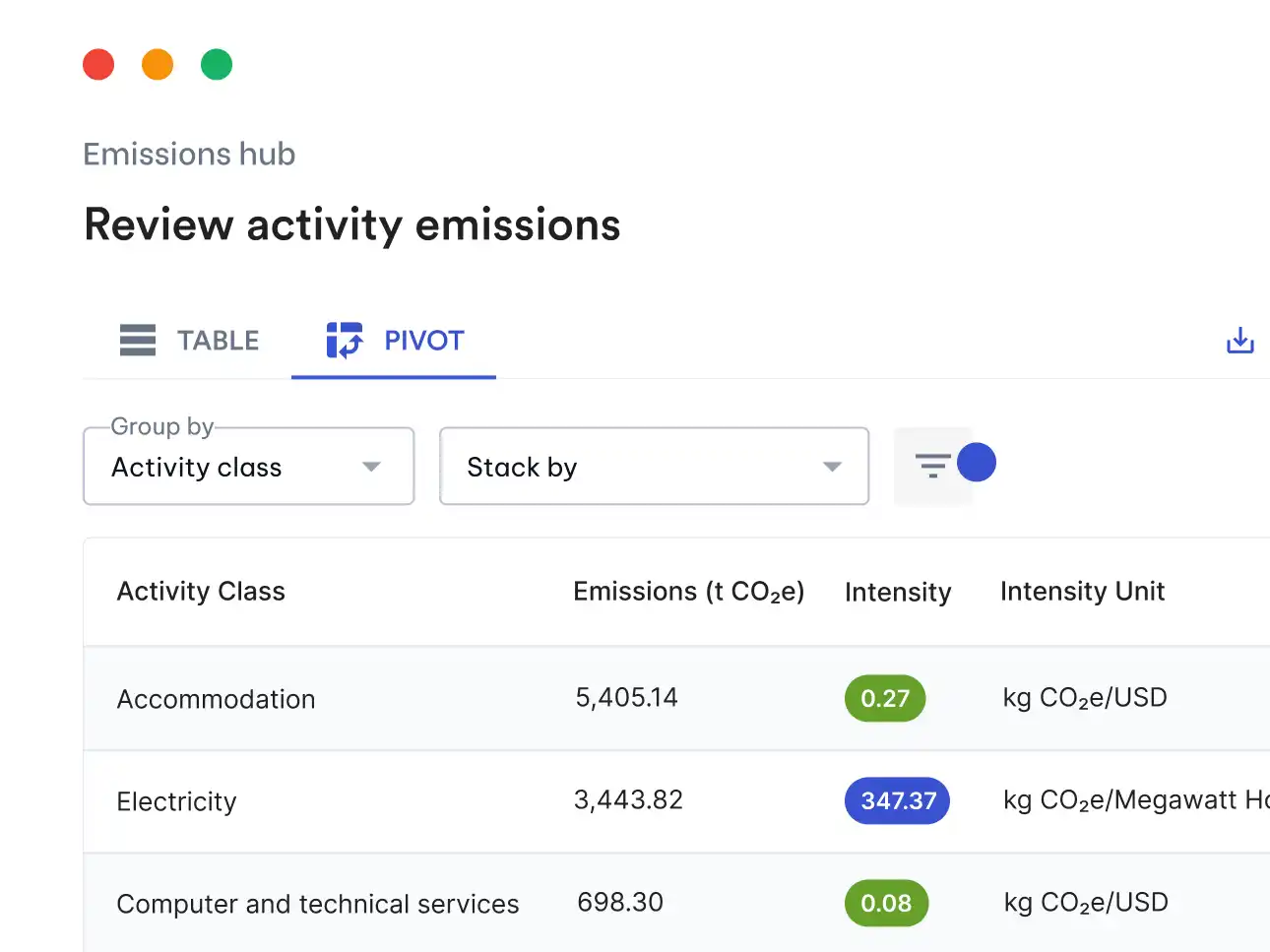Carbon accounting can be time-consuming, especially when done manually. While Avarni simplifies this process, we know many still rely on spreadsheets. This article offers guidance, and you can also explore our comprehensive list of global emission factor databases to find the data you need in one place.
When working with clients to manage their carbon footprint, calculating Scope 3 emissions from business air travel can be a significant task. These emissions fall under the Greenhouse Gas (GHG) Protocol’s Scope 3, Category 6 (Business Travel), and can represent a sizeable portion of an organisation’s indirect emissions. Whether your client is a multinational company or a growing business with frequent long-distance travel, understanding how to calculate and reduce these emissions is crucial to building an accurate and actionable carbon inventory.
This guide will walk you through the key steps of helping your clients calculate air travel emissions, using industry best practices and methodologies to ensure accuracy and compliance with standards.
Understanding Scope 3 air travel emissions
Air travel is typically a prominent source of emissions within a company’s Scope 3 inventory. These emissions depend on various factors, including the distance flown, the class of travel, and the fuel efficiency of the aircraft. To provide your clients with a robust carbon accounting method, you’ll need to gather and analyze this data effectively.
Steps to calculate air travel emissions for your clients
Step 1: Collect activity data from clients
The first step in calculating air travel emissions is gathering detailed activity data from your client. This typically includes:
- Flight distance: Distance traveled in kilometres or miles for each trip. Most travel booking systems or flight providers can provide this information, but ensure it’s captured accurately, including whether flights are direct or involve connections.
- Class of travel: Emissions vary by travel class (economy, business, or first class). Economy class has the lowest emissions per passenger due to higher seating density, while first and business class have a greater carbon footprint per passenger.
- Number of flights: Total flights taken by employees, categorized by department or project if needed for detailed reporting.
This data can often be collected from travel management platforms, internal expense reports, or directly from airlines. Be prepared to guide your clients in tracking this information more rigorously if they lack consistent record-keeping.
Step 2: Choose the right emission factors
Selecting the correct emission factors is essential for calculating accurate emissions. Common databases to consider are:
- DEFRA (Department for Business, Energy & Industrial Strategy): Provides comprehensive factors based on flight distance and class of travel. It’s a go-to for many consultants handling business travel.
- EPA (Environmental Protection Agency): Includes emission factors for fuel combustion and energy use, including jet fuel, though it’s less detailed for flight class differences.
- GHG Protocol: Serves as a broader framework for Scope 3 calculations, and can be used alongside databases like DEFRA or EPA.
DEFRA’s database is often the best choice for calculating business travel emissions because it provides flight-specific factors based on the travel distance (short, medium, and long-haul) and class (economy, business, first).
Step 3: Apply emission factors to client data
Once the appropriate emission factors are selected, apply them to the client’s flight data. The basic formula for this calculation is:
Emissions (kg CO2e) = Flight distance × Emission factor (kg CO2e per km)
Here’s how it works in practice:
- Flight distance: Categorize the client’s flights by distance. DEFRA defines short-haul as up to 3,700 km, medium-haul between 3,700 and 7,400 km, and long-haul for distances greater than 7,400 km.
- Class of travel: DEFRA provides different emission factors for each class. For example, economy class short-haul flights might have a factor of 0.158 kg CO2e per km, while business class on long-haul flights could be 0.468 kg CO2e per km.
This process allows you to break down emissions by flight type and class, giving your clients detailed insights into the carbon intensity of their air travel.
Step 4: Aggregate the data and report back to clients
After calculating emissions for individual flights, aggregate the data to provide a comprehensive view of the client’s air travel emissions. Whether your client requires department-level reporting or a broader company-wide view, this summary should be detailed yet easy for them to interpret. It’s also helpful to track trends over time, as this allows your client to monitor progress in reducing air travel emissions year over year.
Step 5: Adjust for radiative forcing (optional)
Air travel's impact on climate goes beyond CO2 emissions. At high altitudes, emissions of water vapour, nitrous oxides, and particulates contribute to climate change through radiative forcing. To account for this, you may apply a radiative forcing index (RFI), typically a multiplier between 1.8 to 2.0. Here's how it works:
Total emissions (CO2e) = Calculated CO2 emissions × RFI multiplier
Using an RFI adjustment helps provide your client with a more complete picture of their air travel’s true climate impact.
Common considerations
Flight class
The class of travel is a key driver of emissions. Business and first class seats occupy more space and resources, resulting in higher emissions per passenger. DEFRA's factors scale appropriately for this, so ensure you categorize flights accurately by class when advising clients on potential reduction strategies.
Direct vs. connecting flights
It’s important to remind clients that direct flights usually result in fewer emissions than multi-leg journeys due to the fuel-intensive nature of takeoffs and landings. Where possible, suggest direct routes as part of an emissions reduction strategy.
Distance calculation
Make sure to accurately measure flight distances. Many online tools and carbon calculators allow users to input origin and destination airports to determine the flight distance, such as Air Miles Calculator. Alternatively, this information can often be extracted from travel booking systems.

Granularity of data
When working with larger clients, individual flight data may be aggregated, which can make emissions calculations less precise. Push for detailed trip-level data to ensure the most accurate footprint calculation. Encourage clients to track flight legs, class of travel, and layovers more diligently for future reporting.
Supporting your clients in reducing air travel emissions
Accurate calculation is just the first step; helping your clients reduce their air travel emissions is the ultimate goal. Here are a few strategies to offer:
- Encourage virtual meetings: Many organisations have adopted remote working tools, and by promoting virtual collaboration, you can help your clients avoid unnecessary travel.
- Optimize travel policies: Work with your client to develop policies that prioritize lower-carbon travel options, such as rail or direct flights. Consider implementing a travel approval process that factors in carbon impact.
- Offset emissions: While reduction should be the priority, some clients may wish to purchase carbon offsets to mitigate their travel footprint. Encourage them to select high-quality, verified offset projects to ensure tangible environmental benefits.
- Sustainable Aviation Fuel (SAF): SAF can reduce emissions by up to 80%, and several airlines are beginning to offer SAF as part of their commercial operations. Help your clients explore options to purchase flights that use SAF or engage in programs that support its development.
Reporting results and tracking progress
Once the air travel emissions have been calculated, integrate these results into your client’s Scope 3 inventory. Tracking and reporting should align with the client’s overall sustainability goals. Encourage your client to set clear reduction targets and review their progress annually to ensure they’re on track.
Using the spend-based method for clients with limited data
If detailed flight data isn’t available, you can fall back on the spend-based method to estimate emissions from air travel. This involves applying an emission factor to the total amount spent on air travel. The DEFRA or EPA databases provide spend-based emission factors that can be used as a starting point for clients with limited data.
Summary of steps
- Collect flight data: Gather flight distances, class of travel, and number of flights from travel systems or expense reports. Capture both direct and connecting flights.
- Select emission factors: Use databases like DEFRA or EPA. DEFRA is ideal for class and distance-specific factors, ensuring accurate calculations.
- Apply emission factors: Multiply flight distance by the appropriate emission factor based on class and distance (e.g., economy vs. business class). If distance is not available, use the spend-based method.
- Aggregate emissions: Sum the emissions from all flights over a period (e.g., yearly) for a full view of business travel emissions.
- Optional: Adjust for radiative forcing: Apply a multiplier (typically 1.8-2.0) to account for non-CO2 impacts at high altitudes.
- Report and advise: Share results, set reduction targets, and recommend strategies like reducing flights or using sustainable aviation fuel.
Want to automate the process of calculating travel distances and applying the right emission factors manually? Avarni’s carbon accounting tool for consultants can help you:
- Automate travel distance calculations for thousands of flight routes and records at once
- Auto-categorize travel data to the right class & short/medium/long haul emission factors based on distances and other input data
- Aggregate and report emissions by business unit, entity, or any other custom business field
- Ensure a consistent methodology of emissions factor application over time, so progress can be tracked effectively
Sign up for a free 14 day trial today via the form below or contact us to find out how we can help your sustainability consultancy unlock capacity to scale.






